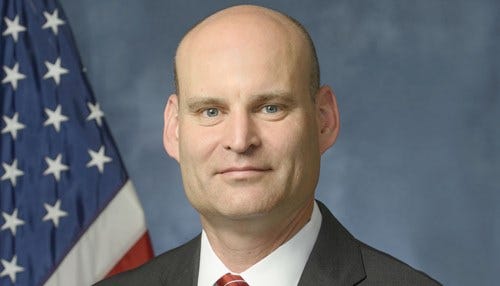Secure Your Perimeters For Real Safety

Subscriber Benefit
As a subscriber you can listen to articles at work, in the car, or while you work out. Subscribe NowThose responsible for ensuring that facilities such as businesses, schools, and churches are safe could learn a lot from the way Secret Service agents think about protection. By understanding the basic approach agents use to create a safe environment, you can improve the security of your facilities and reduce the risk to the people who use them.
It’s true that Secret Service agents provide the final line of defense for a protectee, and a substantial amount of training goes into preparing for that role. But nobody wants a situation in which someone with the intent to harm the President or another protectee can get close enough to create a need for that defense.
Suppose the President is scheduled to speak at your local high school’s basketball gym. Obviously, there will be a number of agents in close proximity to protect the President and move him to a safe location if there’s some kind of attack. However, the real protection begins far from the podium. Agents will typically establish three perimeters of defense.
In this situation, for example, the outer perimeter will likely be the high school site itself, and the focus will be on controlling access to the site and ensuring that vehicles (including the President’s) can get to and from the site. Depending upon the nature of the event and the setting, the outer perimeter might include everything from gates and passes to varying the normal traffic pattern. The agents will look for ways to ensure that anyone who doesn’t have good reason to be at the event can’t get access to the site.
The middle perimeter will be used to control access to a smaller area, such as the building itself. A typical high school may have dozens of access locations, but the agents may limit attendees to only one or two of them. All access points will be monitored, whether that’s to make sure they’re not being used, or to watch those arriving at the event to detect any suspicious behavior.
Finally, there’s the inner perimeter, which may be the gym and the adjacent lobby. Since the outer and middle perimeters focus heavily on verifying that only the right people could reach the area, the inner perimeter will be used largely to monitor the behavior of the attendees. Agents are trained to spot anything out of the ordinary and to intervene promptly if something just doesn’t seem right. If someone is exhibiting unusual behavior, the agents may move them to a preplanned location for investigation.
You may not have a team of highly trained agents to draw upon, but it’s easy to apply the Secret Service’s approach in practical ways. First, identify your facility’s inner perimeter. It should be what surrounds the people and things you need to protect. If the only real security you provide is at your front door, you’re allowing threats to get dangerously close to those people and things. If you’re counting on a receptionist or a security guard to watch the front door, would they stand a chance if a shooter came in and made them his or her first target?
That’s where it pays to create that middle perimeter. It doesn’t have to be elaborate, and might be anything from putting a guarded gate at your parking lot entrance, to requiring that all visitors speak through an intercom or camera before being allowed in the lobby, to improving the lighting in your lot. It may not have to be a physical solution. For example, part of that middle perimeter can be a visitor management system that allows only preauthorized visitors to enter your facilities (and screens everyone during the preauthorization process).
Finally, your outer perimeter may include options such as fencing or security cameras as deterrents. Systems such as parking lot gates can help you restrict people from areas where they shouldn’t be. In addition, that outer perimeter includes local law enforcement. By developing a good relationship with the police and involving them in your security planning, you enhance their ability to protect your people and your facilities.
Secret Service agents are ready to respond to any situation, but their planning approach heads off the vast majority of those threats. The more thought you give to preventing problems, the less likely you’ll find yourself responding to one.
Paul Dvorak is a member of the Advisory Board for Danville-based SafeVisitor and a longtime agent with the U.S. Secret Service.
